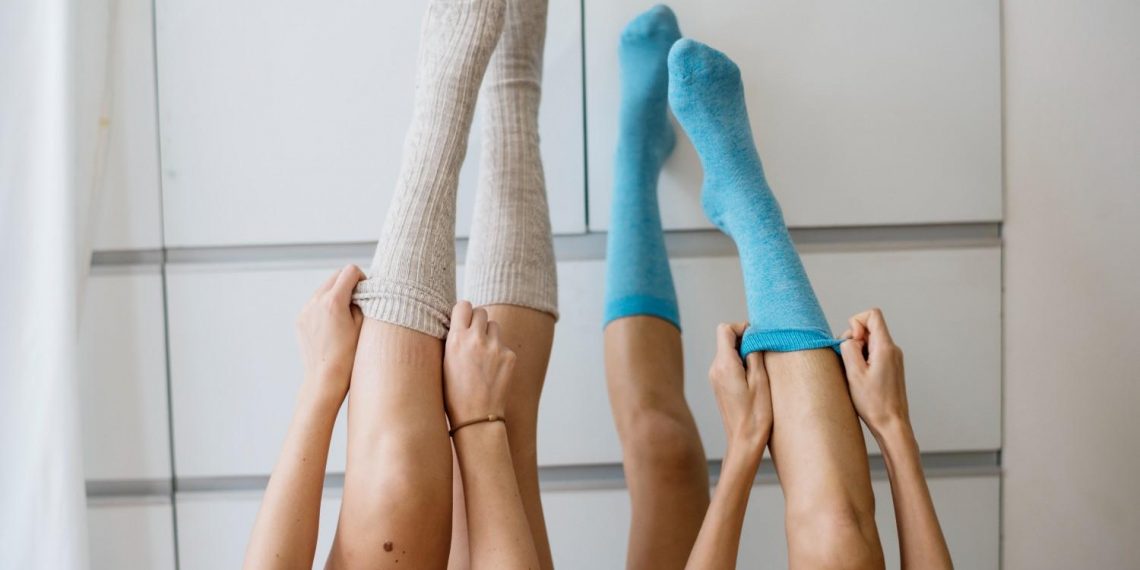Did you know that poor leg circulation can affect more than just your lower limbs? It can lead to discomfort, fatigue, and even more serious health issues if left unchecked. If you’ve ever felt that tingling sensation in your legs after sitting for too long, you’re not alone. Many people experience this, and it often points to less-than-ideal circulation. Fortunately, there are natural remedies you can try to boost your leg circulation and keep those blood vessels happy. Let’s dive into five effective options that might just make a difference for you.
Contents
1. Turmeric: The Golden Spice
You’ve probably heard of turmeric in the context of cooking or even as a trendy health supplement, but did you know it could also help with circulation? The active compound in turmeric, curcumin, has anti-inflammatory properties that might support vascular health.
How It Works
Curcumin helps improve blood flow by reducing inflammation and oxidative stress. Some studies suggest that turmeric can help enhance endothelial function, which is crucial for maintaining healthy blood vessels.
Pros and Cons
- Pros: Turmeric is widely available, easy to incorporate into your diet, and has a host of other health benefits.
- Cons: Some people may experience digestive issues when consuming large amounts. Plus, curcumin isn’t easily absorbed, so pairing it with black pepper can enhance its effects.
How to Use It
Try adding turmeric to your smoothies, golden milk, or even soups. A teaspoon a day might be a good start. Just be cautious if you’re on blood-thinning medication, as turmeric can have a mild anticoagulant effect.
2. Regular Exercise: Move That Body
Let’s be real: one of the best natural remedies for improving circulation is good old-fashioned exercise. Whether you enjoy jogging, dancing, or even a brisk walk, getting your body moving is essential for overall health.
How It Works
Exercise increases heart rate and promotes blood flow throughout the body, including your legs. Activities like walking or cycling help strengthen the muscles in your legs, which can enhance circulation.
Pros and Cons
- Pros: Exercise is free, accessible, and has numerous benefits beyond circulation, including weight management and mood enhancement.
- Cons: It can be challenging to find the motivation to start, especially if you’re not used to regular physical activity.
How to Get Started
If you’re new to exercise, consider starting with short walks and gradually increasing the duration and intensity. Aim for at least 150 minutes of moderate aerobic activity each week, and don’t forget to incorporate strength training exercises at least twice a week.
3. Compression Socks: Supportive Allies
Compression socks might not be the most glamorous accessory, but they can do wonders for leg circulation. These specially designed socks apply pressure to your legs, helping to promote blood flow and reduce swelling.
How They Work
By squeezing the veins in your legs, compression socks help blood return to the heart more efficiently, reducing the risk of blood pooling in the lower limbs.
Pros and Cons
- Pros: They’re relatively easy to use and can be particularly helpful for those who spend long hours sitting or standing.
- Cons: They may feel tight and uncomfortable at first, and finding the right size and compression level is essential for effectiveness.
How to Choose the Right Pair
When shopping for compression socks, look for those with graduated compression, meaning they’re tighter at the ankle and gradually loosen up the leg. Consult with a healthcare provider to determine the appropriate level of compression for your needs.
4. Stay Hydrated: The Unsung Hero
Water might seem like a simple solution, but staying hydrated is crucial for maintaining good circulation. Dehydration can lead to thicker blood, which makes it harder for your body to circulate it effectively.
How It Works
When you’re well-hydrated, your blood volume increases, allowing for smoother circulation throughout your body.
Pros and Cons
- Pros: Drinking water is easy and can be done throughout the day. It’s also essential for overall health.
- Cons: Some people may forget to drink enough water or find it boring.
Tips to Stay Hydrated
Set reminders on your phone, carry a reusable water bottle, or infuse your water with fruits or herbs for added flavor. Aim for at least 8 glasses a day, but remember that individual needs can vary.
5. Dietary Adjustments: Food for Thought
What you eat can have a significant impact on your circulation. Certain foods can help improve blood flow and overall vascular health.
Foods to Include
- Berries: Rich in flavonoids, which can enhance circulation.
- Fatty Fish: Omega-3 fatty acids found in salmon and mackerel can help reduce inflammation.
- Leafy Greens: Foods like spinach and kale are packed with nutrients that support blood vessel health.
Pros and Cons
- Pros: Eating a balanced diet is beneficial for overall health and can be delicious!
- Cons: Dietary changes can be challenging, and it may take time to see results.
Practical Steps
Start by incorporating more whole foods into your meals. Try to limit processed foods high in sugar and unhealthy fats. Meal prepping can also help you stay on track with your dietary goals.
FAQs
1. How long does it take to see improvements in circulation with these remedies?
Improvements can vary based on individual health conditions and lifestyle changes, but many people notice a difference within a few weeks of making dietary and exercise adjustments.
2. Are there any side effects of using turmeric for circulation?
While turmeric is generally safe, high doses can lead to digestive issues for some people. It’s best to start with small amounts and consult a healthcare provider if you have concerns.
3. Can compression socks be worn all day?
Yes, but it’s advisable to take breaks and remove them when resting to allow your skin to breathe. Always follow the manufacturer’s guidelines.
4. How can I encourage myself to exercise regularly?
Find activities you enjoy, set realistic goals, and consider working out with a friend for added motivation. Remember, even short bursts of activity can be beneficial!
Conclusion
Improving leg circulation doesn’t have to involve complicated procedures or expensive treatments. By incorporating these natural remedies—like turmeric, regular exercise, compression socks, hydration, and dietary adjustments—you can take proactive steps toward better vascular health.
But remember, everyone’s body is different. What works for one person might not work for another, so it’s essential to listen to your body and consult with a healthcare professional if you have ongoing concerns. Here’s to happy, healthy legs!
This article is for educational purposes only and is not a substitute for professional medical advice. Always consult a qualified healthcare provider before making changes to your health routine.
References
-
Houghton, C., & Houghton, A. (2014). Turmeric and its active compound curcumin: A review of their effects on inflammation and vascular health. Journal of Clinical Nutrition, 3(2), 1-5. https://doi.org/10.1016/j.jcn.2014.03.002
-
National Heart, Lung, and Blood Institute. (2021). The importance of exercise for heart health. https://www.nhlbi.nih.gov/health-topics/exercise
-
Mayo Clinic. (2023). Compression stockings: What you need to know. https://www.mayoclinic.org/tests-procedures/compression-stockings/about/pac-20387163
Get Your FREE Natural Health Guide!
Subscribe now and receive our exclusive ebook packed with natural health tips, practical wellness advice, and easy lifestyle changes — delivered straight to your inbox.














